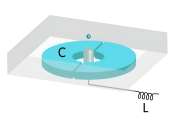Helium exists in liquid form only at extremely low temperatures. The boiling point and critical point depend on the isotope of the helium; see the table below for values. The density of liquid helium at its boiling point and 1 atm is approximately 0.125 g/mL
Helium-4 was first liquefied on 10 July 1908 by Dutch physicist Heike Kamerlingh Onnes. Liquid helium-4 is used as a cryogenic refrigerant; it is produced commercially for use in superconducting magnets such as those used in MRI or NMR. It is liquefied using the Hampson-Linde cycle.[citation needed]
The temperatures required to liquefy helium are low because of the weakness of the attraction between helium atoms. The interatomic forces are weak in the first place because helium is a noble gas, but the interatomic attraction is reduced even further by quantum effects, which are important in helium because of its low atomic mass. The zero point energy of the liquid is less if the atoms are less confined by their neighbors; thus the liquid can lower its ground state energy by increasing the interatomic distance. But at this greater distance, the effect of interatomic forces is even weaker.[citation needed]
Because of the weak interatomic forces, helium remains liquid down to absolute zero; helium solidifies only under great pressure. At sufficiently low temperature, both helium-3 and helium-4 undergo a transition to a superfluid phase (see table below).[citation needed]
Liquid helium-3 and helium-4 are not completely miscible below 0.9 K at the saturated vapor pressure. Below this temperature a mixture of the two isotopes undergoes phase separation into a lighter normal fluid that is mostly helium-3, and a denser superfluid that is mostly helium-4. (This occurs because the system can lower its enthalpy by separating.) At low temperatures, the helium-4 rich phase may contain up to 6% of helium-3 in solution, which makes possible the existence of the dilution refrigerator, capable of reaching temperatures of a few mK above absolute zero.[citation needed]









